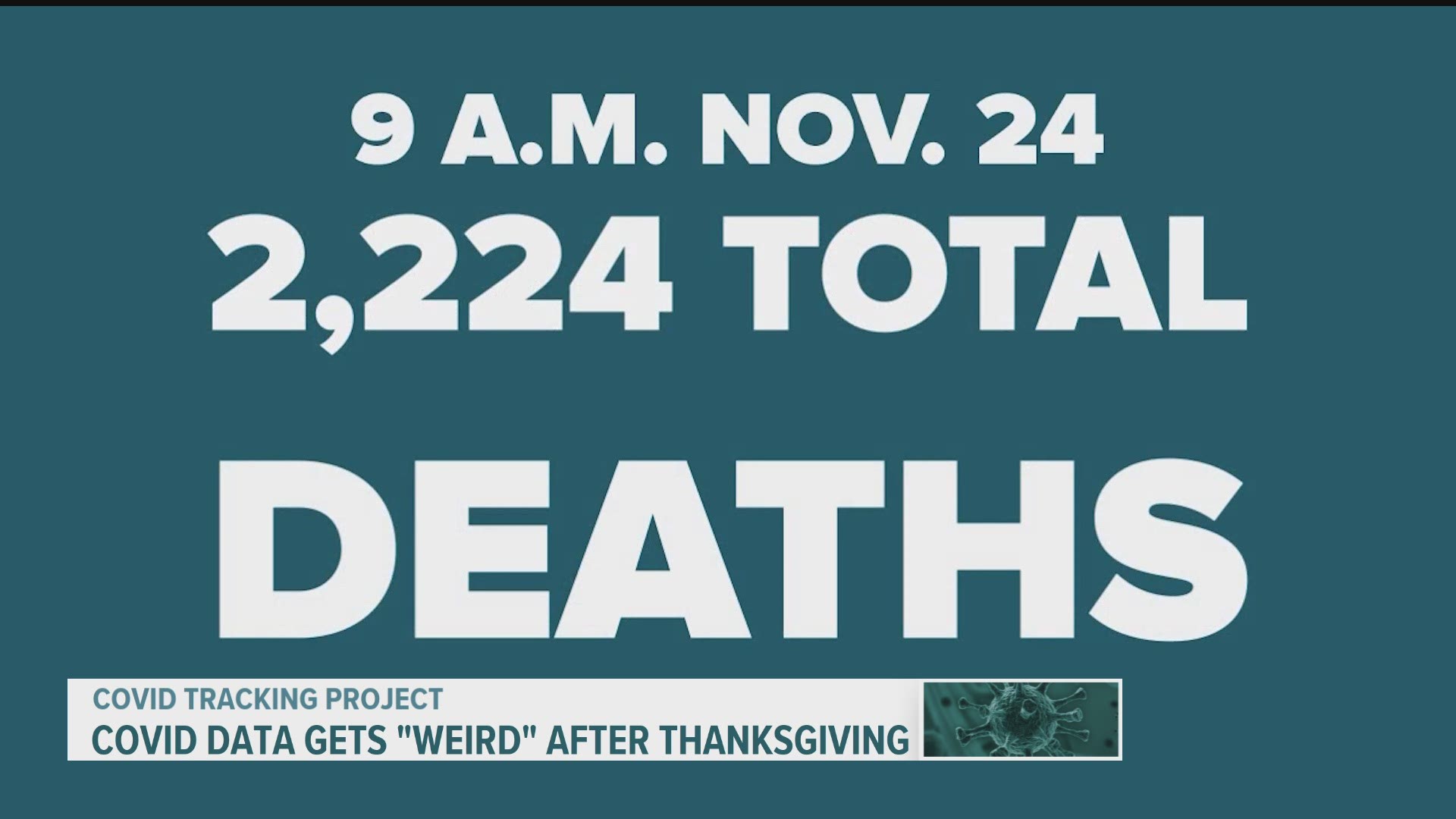DES MOINES, Iowa — The COVID Tracking Project says daily novel coronavirus data is going to "get weird" over the holidays due to fluctuations in testing, cases and deaths.
That's because all three of these metrics will "flatten out or drop, probably for several days," according to the COVID Tracking Project. This is expected to happen as early as Wednesday and over Thanksgiving.
The decrease will make it look like things are getting better across the United States, but the following week will most likely see a huge spike in the metrics.
While it'll look like Thanksgiving is causing outbreaks to worsen, neither this or the decrease in cases, deaths and testing will necessarily mean anything about the status of the overall pandemic.
Like the weekends, holidays cause testing and reporting to go down. That's why we usually see spikes from Wednesday through Saturday.
How Iowa data is reported by the COVID Tracking Project vs Iowa Department of Public Health
The COVID Tracking Project says most states and territories usually report Saturday results on Sunday and Sunday results on Monday. Nationally, test reporting drops Sunday through Wednesday and case reporting falls on Sundays and Mondays.
These weekday patterns suggest that most jurisdictions don't fully catch up on weekend data until Wednesdays for cases and Thursdays for tests, according to the COVID Tracking Project.
This isn't reflected in Iowa's data. That's because the COVID Tracking Project reports data differently than the Iowa Department of Public Health (IDPH).
The COVID Tracking Project compiles and publishes data organized by the date on which it's reported rather than the date of specimen collection, data of symptom onset, date of death, etc.
The IDPH reports data constantly and attributes test results to the day the person is tested and deaths to the date the person died.
So, if an individual is tested on Monday, Nov. 23 and tests positive, their test is listed for Nov. 23, not the day they are notified of their result. If a person dies from the virus on Nov. 23, their death is attributed to the day the died, not the day their death is posted to the website.
When you receive a daily COVID-19 update from Local 5, you are looking at the data reported that day.
RELATED: Nearly 150 long-term care facilities experiencing virus outbreaks as state reports 47 more deaths
Why the data may be misleading after Thanksgiving
The data we will see the week after Thanksgiving will not only reflect actual increases in data, but also add a potentially large backlog from the holiday.
We've seen this before over holidays during the pandemic. Let's take a look at Labor Day, which was on Sept. 7 this year. The holiday is always on the first Monday of September.
The IDPH's coronavirus website says 1,689 Iowans were tested for the virus that day. Only 274 tested positive. Just one week later, 8,817 Iowans were tested with 1,584 testing positive.
Death reporting is also impacted on the COVID Tracking Project's website. On average, it takes over a week to report a coronavirus-related death.
Remember— the IDPH attributes deaths to the day the person died, not the day their death was reported. The COVID Tracking Project attributes deaths to the date they're reported.
Deaths may not be different on the IDPH's website after Thanksgiving, but it is possible that many deaths will be added to the website in one day.
However, the COVID Tracking Project warns that while there may only be minor disruptions in the data, the differences between this week and summer holidays are concerning.
With TestIowa sites being closed for the holiday, it's likely that there could be a backlog in tests, and that could take extra time to process.
We're also in a different place than where we were in the summer and early fall. Tests, cases and deaths in Iowa are dramatically higher than the beginning of September.
It's impossible to know for sure when Thanksgiving exposures will be included in daily reporting, according to the COVID Tracking Project.
They noticed holiday effects over the summer for July 4 and Labor Day, both holidays that took place during periods of relative stability in the course of the nationwide pandemic.
WATCH: Complete coronavirus coverage on Local 5's YouTube channel

